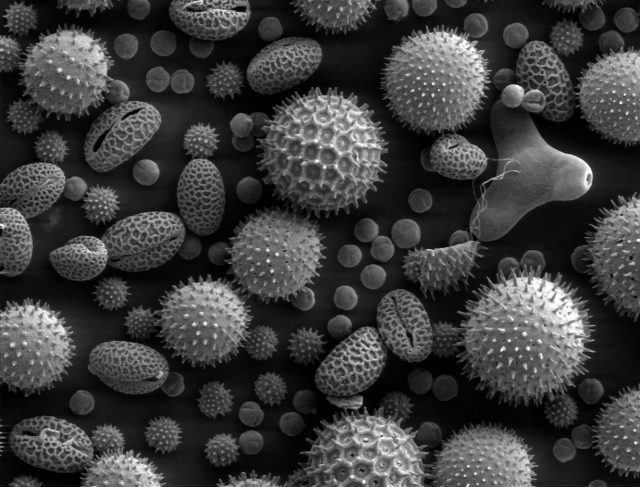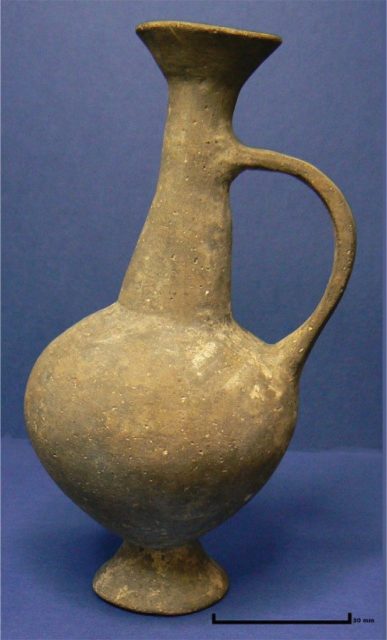At the crossroads of Botany and Archaeology
This article is focused on a recent paper1 [PDF] written by Jo Day from the Department of Classics of the University College Dublin exploring the links between botany and archaeology using case studies from ancient Mediterranean civilizations.
Archaeology is more associated with the discovery of tombs and ancient human remains than with plants. However, the information that can be extracted from plant remains is usually more valuable. In fact, it is only in the last 50 years that archaeologists have truly realized the amount of knowledge that can be gained from botanical remains. This has led to new disciplines like paleobotany or archaeobotany. These two, are also closely related to ethnobotany, the study of the relationship between people/culture and plants.

Paleobotany deals with the reconstruction of ancient climate and ecological systems through the study of plant fossils. Paleobotanical remains can be divided in two types: macrofossils and microfossils. Macrofossils include among others, charcoal, impressions on clay and grains (Fig. 1). Microfossils need magnification to be visible and generally are pollen (palynology) and phytoliths. Phytoliths, from Greek “plant stone”, are silica deposits in plant tissues that survive after plant death. To recover the pollen (Fig. 2), usually sediment cores are extracted of environments were pollen is preserved, like lacustrine areas. Phytoliths generally provide better information since with pollen many times the identification can be done only at the genus level (e.g. Quercus).

Molecular biology studies, as genetic analysis, are now also very helpful to gain information from paleobotanical remains. For example, DNA was isolated from classical amphoras from Chios and revealed that they contained olive (Olea europaea), oregano (Origanum vulgare) and Pistacia species.
In general, plant remains provide us information about how ancient civilizations used plants. These uses can be divided in four main groups: 1) diet 2) medicines and drugs 3)perfumes and cosmetics and 4) social prestige.
1) Diet
In the ancient world people´s diet was mainly composed of vegetables, fruits, legumes and olive oil. The majority of people only ate meat for special occasions like sacrifices. Food can teach us not only information about human diet but also about social practices. For example, weeds found together with grains give us an idea about agricultural practices such as manuring or harvesting time. Besides, we can also learn if the grains were imported from other locations.
Coprolites, mineralized or desiccate faeces, are very useful in paleobotany. Their study helps us to decipher the vegetation in that period, and also to study animal or human diet, including if the plant matter was cooked. Coprolites have even been recovered from mummy intestines. For example coprolite study revealed that prehistoric people of the American southwest used to eat edible flowers (Agave, Cucurbita, etc.).
Stable isotopes analysis of hair and bones from Nubian mummies (Fig. 3) led to the discovery of seasonal fluctuations between summer consumption of millet and sorghum and the year round staples of wheat and barley.

2) Medicines, drugs and poisons
As you know, many plants contain substances with medical, psychotropic and/or poisonous properties. In general, it is difficult to know the exact use of each plant since the same substance depending on the dosage can be a medicine, a drug or a poison. For instance, the sap of the opium poppy (Papaver sommniferum) was widely used in Mediterranean cultures from the Bronze Age. Poppy seeds were also used to produce oil or as direct food. In fact, ceramic juglets, known as Base Ring Wares, that have been found in many regions of eastern Europe like Cyprus and Egypt seem to be opium containers (Fig., 4) based on the fact that the vessel shape bears a striking similarity to an opium poppy capsule and on recent chemical tests. Moreover, many written sources of the later Classical times refer to poppy and opium. For instance, Hippocrates admitted to use it as a narcotic.

Another example of plant use is that a hunting poison derived from castor beans (Ricinus communis) has been identified on a Paleolithic tool from South Africa, but the true intention of it is impossible to ascertain.
3) Perfumes, cosmetics and dyes
There is a lot of information available in ancient books regarding the use of flowers to manufacture perfumes, such as the book written by Theophrastus (4th or 3rd century BC). Apart from the literary sources, ancient perfumeries have also been excavated wherein a significant number of jars and equipment has been found.
The analysis of residues from jars and vessels has allowed the identification of a number of oils and resins. For example, traces of oil of iris were identified in the residues of vessels from c. 2000 BC in Crete. Also, a jar from the Late Bronze Age was found in Turkey containing terebinth (Pistacia sp.) resin, most likely for use in aromatics. Many fragrant resins were also used in the mummification process in Egypt, like myrrh (Commiphora sp.) and frankincense (Boswellia sp.). Interestingly, these plants do not grow in Egypt and they had to be imported from other regions of the south of the Red Sea. Surely vegetal dyes were also used for giving color to clothes, like saffron (yellow) and kermes (red).
4) Plants and prestige
Plants did not have to be eaten or made into perfume to bring prestige to those who owned them. Often their display was enough. For example, Roman Emperors exhibited balsam trees (Commiphora sp.) from Judae in Rome as symbol of military victories. Egyptian pharaohs also used to bring plants from their campaigns.
Royal gardens have always been an important symbol of power and knowledge. For example an Inscription of king Tiglath Pileser I (1114 – 1076 BC) says “I took cedar, box tree, Kanish oak from the lands over which I had gained dominion and……planted in the orchards of my land”. Another use of gardens has been related to growing plants for their use in rituals. Egyptian temple gardens provided offerings for deities such as lettuces for Min, the god of fertility, whose milky sap was reminiscent of semen. Also, being associated with certain plants could bring fortune and fame, for instance with the extinct silphium (believed to be a plant of the genus Ferula) depicted on coins and mentioned in literary resources.
References
- Day J. Botany meets archaeology: people and plants in the past, Journal of Experimental Botany, DOI: 10.1093/jxb/ert068 ↩